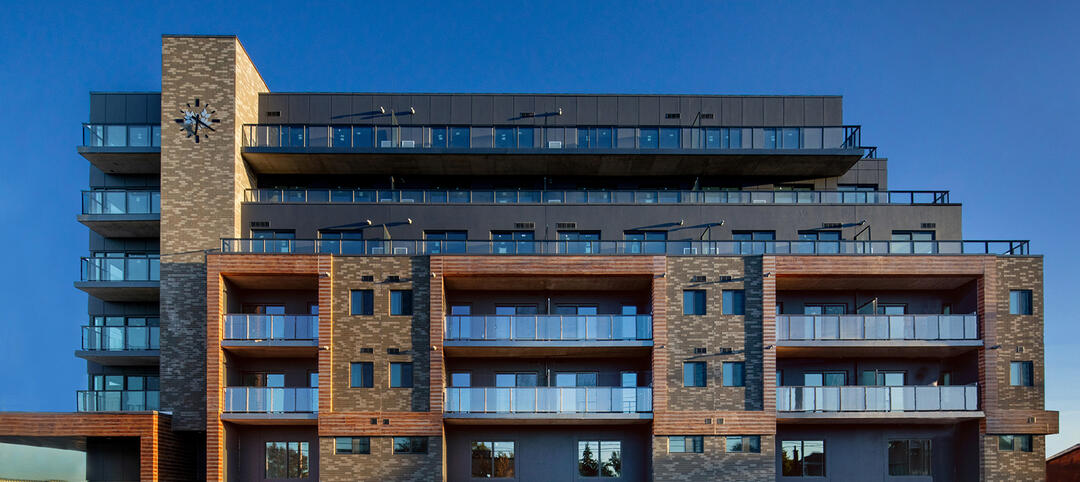Antimicrobial building products marketed as “healthy” or beneficial to human health contain ingredients that may have adverse environmental or human health impacts, and alternative products should be considered whenever possible, according to a new white paper by global architecture and design firm Perkins+Will and the Healthy Building Network (HBN).
Healthy Environments: Understanding Antimicrobial Ingredients in Building Materials exposes the lack of scientific evidence supporting claims that so-called antimicrobial products like paints, kitchen countertops, door handles, flooring, and other interior finishes help ward off communicable diseases. In fact, the report highlights a growing body of research suggesting potential negative impacts of antimicrobials on both the body and the environment. Potential impacts include the possible proliferation of “super bugs” caused by microbial resistance, contamination of aquatic ecosystems, and potential exposure to known or suspected carcinogens like formaldehyde.
“What consumers don’t realize is that the federal government considers antimicrobials pesticides because they are agents used to kill or control living organisms—and they should therefore be used with great care,” says Suzanne Drake, a senior interior designer at Perkins+Will and co-author of the white paper. “Because we caution against using building products containing ingredients suspected of hazardous health impacts, we should avoid products containing antimicrobial ingredients. That includes building products intended for healthcare settings.”
Perkins+Will is placing “Products Marketed as Antimicrobial” on its Precautionary List, urging designers to consider alternatives before specifying them. The move reflects the position of the U.S. Centers for Disease Control and Prevention, the U.S. Food and Drug Administration, and other credible organizations that have reviewed antimicrobial agents and found them to be both ineffective and unnecessary.
“The fact is, there’s zero evidence that antimicrobial additives provide a health benefit,” says Drake.
Building products with antimicrobial additives are relatively new in the marketplace, but their recent surge in popularity has been fueled by manufacturers looking to differentiate themselves and tap into consumer demand for healthy products and healthy built environments. The number of antimicrobial consumer products on the market grew from just a few dozen in 1994 to more than 2,000 in 2014. In some cases, manufacturers add antimicrobial ingredients to a product as a preservative to protect the product from decay, yet they still market the product in ways suggesting that the benefits of the antimicrobials may extend to human health.
“Because the identity and intended purpose of antimicrobials used in building products is often poorly disclosed, it can be difficult to understand what you’re buying,” says Melissa Coffin, principal investigator with HBN and co-author of the white paper. “Perkins+Will’s approach to consider alternative products to those marketing antimicrobial attributes categorically is a good strategy for navigating a complicated issue.” A dedicated appendix in the white paper explains the legal framework that makes the issue so complicated, Coffin adds.
To read a quick overview of the white paper’s top 10 findings, click here.
To read the full white paper, click here.
Related Stories
Multifamily Housing | Sep 15, 2022
Toronto’s B-Line Condominiums completed using prefabricated panels
B-Line Condos, Toronto, completed using Sto Panel Technology.
Mass Timber | Aug 30, 2022
Mass timber construction in 2022: From fringe to mainstream
Two Timberlab executives discuss the market for mass timber construction and their company's marketing and manufacturing strategies. Sam Dicke, Business Development Manager, and Erica Spiritos, Director of Preconstruction, Timberlab, speak with BD+C's John Caulfield.
Sponsored | BD+C University Course | Aug 24, 2022
Solutions for cladding performance and supply issues
This course covers design considerations and cladding assembly choices for creating high-performance building envelopes — a crucial element in healthy, energy-efficient buildings.
Sponsored | | Aug 4, 2022
Brighter vistas: Next-gen tools drive sustainability toward net zero line
New technologies, innovations, and tools are opening doors for building teams interested in better and more socially responsible design.
Building Materials | Aug 3, 2022
Shawmut CEO Les Hiscoe on coping with a shaky supply chain in construction
BD+C's John Caulfield interviews Les Hiscoe, CEO of Shawmut Design and Construction, about how his firm keeps projects on schedule and budget in the face of shortages, delays, and price volatility.
Building Materials | Jul 20, 2022
LP Building Solutions celebrates 50th anniversary at NYSE ceremony
LP Building Solutions celebrates 50th anniversary at NYSE ceremony.
Building Materials | Jun 20, 2022
Early-stage procurement: The next evolution of the construction supply chain
Austin Commercial’s Jason Earnhardt explains why supply chain issues for the construction industry are not going to go away and how developers and owners can get ahead of project roadblocks.
Sponsored | BD+C University Course | May 10, 2022
Design guide for parapets: Safety, continuity, and the building code
This course covers design considerations for parapets. The modern parapet must provide fire protection, serve as a fall-protective guard, transition and protect the roof/facade interface, conceal rooftop equipment, and contribute to the aesthetic character of the building.
Sponsored | BD+C University Course | May 10, 2022
Designing smarter places of learning
This course explains the how structural steel building systems are suited to construction of education facilities.
Sponsored | BD+C University Course | May 5, 2022
Designing with architectural insulated metal wall panels
Insulated metal wall panels (IMPs) offer a sleek, modern, and lightweight envelope system that is highly customizable. This continuing education course explores the characteristics of insulated metal wall panels, including how they can offer a six-in-one design solution. Discussions also include design options, installation processes, code compliance, sustainability, and available warranties.

















